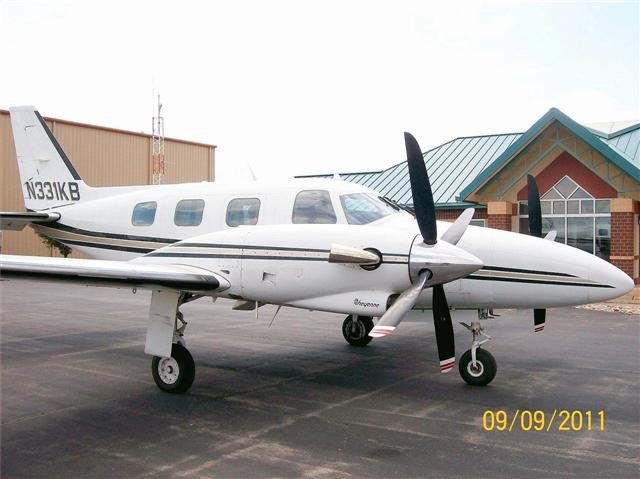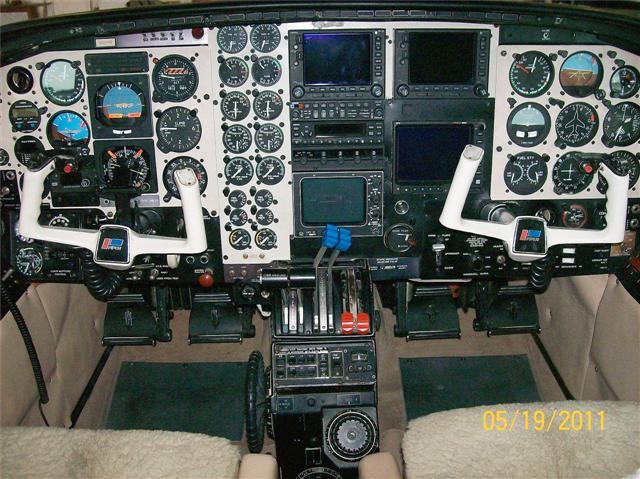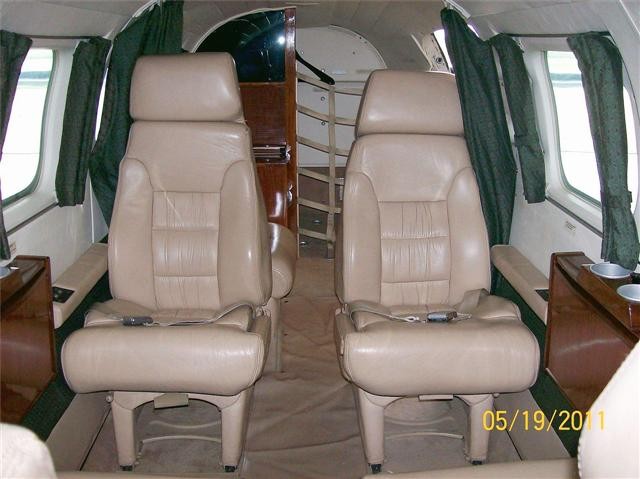


Aircraft Description
Background/History
In the late 1960’s, Piper Aircraft Corporation began development of a pressurized, twin-engine turboprop based on its successful PA-31 Navajo airframe. Redesign of the fuselage to accomodate pressurization was completed relatively quickly, and resulted initially in the deployment of a pressurized piston twin, the PA-31P Navajo P. Meanwhile, Piper engineers continued work on adapting the airframe to Pratt & Whitney PT6A-28 powerplants. The resulting PA-31T Cheyenne was introduced in 1974. The Cheyenne I was introduced in 1978 as a lower-cost, “entry-level” version of the Cheyenne. It utilized the less-powerful P&W PT6A-11’s (500 shp ea), and offered as options some equipment which had been standard on the earlier Cheyenne. The original Cheyenne, which retained the PT6A-28 powerplants, was then renamed the Cheyenne II. In 1984, Piper introduced the Cheyenne IA, whose redesigned engine nacelles, exhaust stacks, and increased ITT limits yielded improvements in cruise speed and range. The Cheyenne IA was discontinued in 1985. The FAA registry lists 153 aircraft; 215 were built.
Power
The Cheyenne I is powered by a pair of Pratt & Whitney of Canada PT6A-11 turboprop engines rated at 500 shp each, driving three-bladed, constant speed, full feathering Hartzell propellers. Engine inspection interval is 3,600 hours.
Avionics
King Silver Crown avionics were standard equipment on the Cheyenne I, including the KFC 250 flight control system, KI 525A electric HSI, and KI 229 RMI.
Design Features
The Piper Cheyenne I is a light, cabin-class, twin engine turboprop business aircraft configured as a cantilever low-wing monoplane with conventional tail. The airframe is of aluminum monocoque construction. The retractable tricycle landing gear has one wheel on each unit. Entry to the cabin is provided by a single-piece airstair door on the port side, aft of the wing. Wingtip fuel tanks, standard equipment on the original Cheyenne, are optional on the Cheyenne I. The 609 lbs. of fuel carried in the tiptanks brings the total fuel capacity to 2,559 lbs. The Cheyenne IA nets some performance gains from a redesign of the nacelles, amounting to a cleanup of the intake path, and also from re-engineered exhaust stacks. The recommended cruise speed increases to 253 kts TAS, the high speed cruise to 260 kts and Vmo to246 kts on the Cheyenne IA.
Accomodations
The Cheyenne I is normally configured to seat six passengers in addition to the pilot, including one occupant in the right seat on the flight deck. The cabin seating is commonly arranged in a four-seat club, with an individual fifth seat aft, opposite the airstair door. The Cheyenne IA offers an enlarged nose baggage compartment, now large enough to accomodate golf clubs, in addition to smaller and lighter cabinetry, resulting in a slight improvement in interior space.
| General | Cheyenne I , PA-31T-500 I | |||
|---|---|---|---|---|
| Category | Multiengine Turboprop < 12,500 lbs. | |||
| Years Aircraft Manufactured | 1978 – 1983 | |||
| Serial Number Range | 7804001 – 8104102 | |||
| Retail High Price | $679,000.00 / 532,811.30€ | |||
| Retail Low Price | $325,000.00 / 255,027.50€ | |||
| Characteristics | Cheyenne I , PA-31T-500 I | |||
| Seating | 1 + 6/7 | |||
| Wing Loading | 38.0 | |||
| Power Loading | 8.7 | |||
| Noise(EPNdB): Takeoff/Sideline/Approach | 75.0 | |||
| External Dimensions (ft) | Cheyenne I , PA-31T-500 I | |||
| External Length | 34.7 | |||
| External Height | 12.8 | |||
| External Span | 42.7 | |||
| Internal Dimensions (ft) | Cheyenne I , PA-31T-500 I | |||
| Internal Length (Overall/Net Height) | 8.4 | |||
| Internal Height | 4.3 | |||
| Internal Width (Max/Floor) | 4.2 | |||
| Baggage | Cheyenne I , PA-31T-500 I | |||
| External: Cu.Ft./Lb. | N/A | |||
| External: Cu.Ft./Lb. | N/A | |||
| Power | Cheyenne I , PA-31T-500 I | |||
| Engines | 2 P&WC PT6A-11 | |||
| Output (lbs ea.)/Flat Rating | 500shp | |||
| Inspection Interval | 3,600t | |||
| Data based on latest manufactured year | ||||



